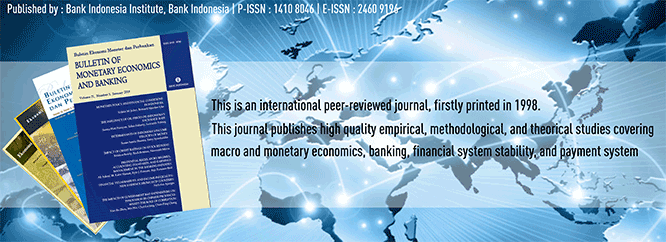
Document Type
Article
Abstract
Financial inclusion is one of strategies to increase inclusive growth in a lot of countries. However it may cause either stability or instability in the financial system and the impact can be different among income group countries. Potential instability in the financial system occurs when financial inclusion causes reduction in credit standard, inceasing risk of bank reputation, and uncoresponding regulation in microfinance. Therefore, this research aimed to measure financial inclusion and financial stability indexes between countries and analyze the impact of financial inclusion on financial stability in 19 countries based on income group from 2004-2014. Data were collected from World Bank, the International Monetary Fund (IMF) database, and other sources. The methods used Sarma index to calculate financial inclusion, Albulescu and Goyeau index to calculate financial stability, and tobit model to analyze the impact of financial inclusion on financial stability. The results show higher income countries have higher financial inclusion and financial stability index than lower income countries. Financial inclusion only has positive significant effect to financial stability in high income countries. Lower and upper middle income countries have to increase availability of financial services to enhance financial inclusion. Moreover, lower and upper middle income countries have to increase financial development to enhance financial stability.
Recommended Citation
Dienillah, Azka Azifah; Anggraeni, Lukytawati; and Sahara, Sahara
(2018)
"Impact of Financial Inclusion on Financial Stability based on Income Group Countries,"
Bulletin of Monetary Economics and Banking: Vol. 20:
No.
4, Article 6.
DOI: https://doi.org/10.21098/bemp.v20i4.859
Available at:
https://bulletin.bmeb-bi.org/bmeb/vol20/iss4/6
First Page
429
Last Page
442
Creative Commons License

This work is licensed under a Creative Commons Attribution-NonCommercial 4.0 International License
Country
Indonesia
Affiliation
Bogor Agricultural University







